Fusion 550R 500W PSU Discontinued | |
| More variations available Show | |
Arctic Cooling Fusion 550R 500W PSU
Fusion 550R follows the default ATX form factor and therefore will fit into every ATX PC case and is equipped with two 6-pin and 8-pin PCI-E connectors. It is ideal for powering a Crossfire or SLI setup.
It’s not Power Supply Unit, it’s Payment Saving Unit!
Fusion 550R follows the default ATX-Form-Factor and therefore will fit into every ATX PC-Case. It fulfils the ATX 2.2 specifications and can offer a continuous power of 550 Watt. Equipped with two 6-pin- and 8-pin PCI-E connectors the PSU is ideal for powering a Crossfire or SLI setup.
Features
- Ultra quiet 80mm PWM fan with low noise impeller
- 550W output power, ATX 2.2
- 82-86% efficiency, 99% PFC
- 80mm ARCTIC F8 Pro fan
- Intelligent fan control (700 - 2,000 RPM)
- Controller for case ventilation
- Over-Power, Over-Voltage, Short Circuit protection, Over-Current Protection
- SLI and Crossfire compatible
High Efficiency = Less Power Loss = Quiet Cooling
With an efficiency of at least 82 to 86%, less heat is generated inside the PSU and as a result a single 80mm fan is enough to cool the PSU. The rubber-mounted fan rotates between 700 and 2000 RPM making it virtually silent. Additionally to this the PSU comes with two external fan-connectors giving the possibility to control the case fans based on the PSU load and temperature which lowers the noise level of the system to an absolute minimum.
Safe and stable PSU
With a PFC-factor of 99% and two separated 12-volt-rails (which support each other if necessary) the Arctic Fusion 550R is a very safe PSU. The overload, overvoltage and short-circuit protection safeguards the hardware as well as the user from damage.
PLEASE NOTE - Arctic Cooling measure noise levels in Sone (loudness) instead of dB (sound intensity). The loudness depends upon your ears response curves and tells you how noticeable a certain noise is.
Reviews
Driver Heaven
The Arctic Cooling Fusion 550R is a good and very efficient PSU, making it an ideal choice for people who would like to receive the best possible overall performance for their money. It is reasonably priced, efficient and very quiet. It certainly should be in your shortlist when shopping for a 450-600W unit.
Xtreme Computing
I cannot fault the Arctic Cooling Fusion 550R it seems to be priced a long side the competition, it looks good, if a little odd, with the fan mounted externally, though it is still inside the pc case so you wont lose any digits if you need to reach around the back of the pc whilst its powered up. All the power cables are sleeved which is another big plus point in my book as it keeps things looking neat and tidy.
RBMods.com
Overall I am very happy with the performance and will award this with our editors choice award for rock stable performance and ultra silent fan.
| Specifications | Fusion 550 |
|---|---|
| +3.3V max load | 24 A |
| +5V max load | 24 A |
| +12V1 max load | 17 A |
| +12V2 max load | 17 A |
| Combined maximum output +3.3V / +5V | 130 W |
| -12V max load | 0.8A |
| +5VSB maximum standby current | 2.5 A |
| Dimensions | 160L x 150W x 86H mm (including fan) |
| Efficiency | 82 - 86% |
| PFC | Active 99% |
| Fan | 80mm ARCTIC F8 Pro |
| Fan Speed | 700 - 2,000 RPM by Intelligent Controller |
| Noise Level | 0.08 - 0.3 sone |
| Power Good Signal | 100 - 500 mS |
| Hold Up Time | 17 mS |
| MTBF | 100,000 hours at 25°C ambient temperature |
| Safety | CUL (Level 6) / CE / CB |
| Protection | OVP / OPP / SCP / OCP |
| Input Voltage | AC 200 V - 240V (Auto Range) |
| Input Current | 3.0A at 230 Vac |
| Input Frequency Range | 47 - 63 Hz |
| Power Output | 550 Watts |
| +12V (case fan) | 2 x 0.3A |
| Operating Temp | 0°C - 50°C |
| Storage Temp | -40°C - 80°C |
| Operating Humidity | 20% - 80% |
| Storage Humidity | 10% - 95% |
| Warranty | 36 months |
| EAN barcode | 0872767002302 |
| Specifications | Fusion 550 |
|---|---|
| +3.3V max load | 24 A |
| +5V max load | 24 A |
| +12V1 max load | 17 A |
| +12V2 max load | 17 A |
| Combined maximum output +3.3V / +5V | 130 W |
| -12V max load | 0.8A |
| +5VSB maximum standby current | 2.5 A |
| Dimensions | 160L x 150W x 86H mm (including fan) |
| Efficiency | 82 - 86% |
| PFC | Active 99% |
| Fan | 80mm ARCTIC F8 Pro |
| Fan Speed | 700 - 2,000 RPM by Intelligent Controller |
| Noise Level | 0.08 - 0.3 sone |
| Power Good Signal | 100 - 500 mS |
| Hold Up Time | 17 mS |
| MTBF | 100,000 hours at 25°C ambient temperature |
| Safety | CUL (Level 6) / CE / CB |
| Protection | OVP / OPP / SCP / OCP |
| Input Voltage | AC 200 V - 240V (Auto Range) |
| Input Current | 3.0A at 230 Vac |
| Input Frequency Range | 47 - 63 Hz |
| Power Output | 550 Watts |
| +12V (case fan) | 2 x 0.3A |
| Operating Temp | 0°C - 50°C |
| Storage Temp | -40°C - 80°C |
| Operating Humidity | 20% - 80% |
| Storage Humidity | 10% - 95% |
| Warranty | 36 months |
| EAN barcode | 0872767002302 |
Customer Reviews
Great service - pretty good PSU
Really speedy shipping from Quiet PC - great stuff!
The PSU is pretty good - it’s far quieter than the standard PSU it replaces, but you can definitely still hear the fan. It’s good, but not amazing.
One small note here - the stated output is 500W on the title (credit to Quiet PC), but 550W in the specs. Reading the actual PSU I’d say 500W is correct as the 550W refers to a peak output (for a max of 1 second). Not really a big deal for me as I only need around 480W, but it may matter to someone else.
short cables
I cannot give a full review at the moment as I am still scratching my head as to how I am going to make some connections reach. I am using a Antec Mini p180 that is a smallish midi tower suitable for micro atx boards, however its unusual as the psu is mounted on the bottom and has to vent through front to back. This PSU was the only suitable one here, however cables, particularly main ATX and 4pin power are short, I cannot get the 4pin anywhere near the connector on the board and I am toying with the idea of splicing a section in to extend it by about 4 inches. I know this will void any warranty but I don’t have much choice. All the PSUs these days have damn big fans on their base and I cannot use one of them. all my other PSUs have way longer cables, it is very quiet though. only time will tell.
Please search Google for a “PSU 4-pin Extension cable”. This is better than splicing the PSU cables.
Cool PSU
The unit is very quiet. I have always been sceptical whenever a reviewer says that when they place their ear adjacent to the unit, that no sound appears to be emitted - well I’m eating my words not a peep - cool. Unfortunately the unit only contains 3 molex / ide type power connectors; I haven’t deducted a star for this, as I guess this could be a hint for me to move into the 21st century in turns of replacing IDE devices with their SATA counterparts. The cables are braided which helps in terms of neatness. I have however deducted a star due to the fact that the unit does not have modular connectors although the case that I possess allows me to hide the excess.
Great unit.
Quiet and well built
This thing is really quiet in spite of the smaller fan size. I had an Antec Earthwatts PSU before and I just couldn’t believe how much difference this PSU makes. You can literally hear a pin drop. I can’t hear this thing at all, even when the system is maxing out.
The placement of the fan is pretty smart since it absorbs all vibration, and makes the fan easy to clean should you ever need to. It also means that it’s not sucking in the warm air from the CPU.
The build is good. My only criticism is that all of the SATA connectors are on one wire which could be a problem if you have a SATA DVD drive as well as SATA disks. Providing it stays reliable I am very happy with this.
Product Resources
FAQ
Do high wattage power supplies cost more to run?
No - the rated wattage of a power supply refers to the maximum amount of power it can deliver at full load, not how much power it uses. More powerful PSUs will consume around the same amount of power as lower powered power supplies in any given PC system, so your electricity bill will not be higher when using a more powerful power supply!
The best way to reduce your electricity bill when using your PC is to use a more efficient power supply or make your PC consume less power by removing components which are not needed, such as extra drives and expansion cards, or by choosing a cooler-running processor or graphics card.
My brand new power supply doesn’t work! Am I doing something wrong?
It’s possible that the power supply may be faulty, but here are some simple things to check. Firstly, a power supply will not work if you simply plug it in and flick the switch. The power supply will only turn on if you connect it to a working motherboard and associated items (processor, memory, video card, etc). It is actually the motherboard which tells the power supply when to switch on.
Secondly (if applicable), check the voltage is set correctly to 115/230 volts depending on what country you are in. Thirdly, if possible it would be good to try the power supply in another PC to see if it works, or try another power supply in your PC to see if that works. You can then tell whether it is the power supply which is faulty or the actual PC itself. If all else fails, please contact us for further support, and/or return details.
Why should I buy a whole new PSU when I could just replace the noisy fan in my existing one?
Virtually all the noise generated by a PC power supply originates from the cooling fan inside it, so simply replacing the fan with a quiet fan may seem an obvious way to go. However, if you are thinking about attempting this operation, please bear the following points in mind:
- Your existing power supply will be designed to run with a specific amount of airflow in order to adequately cool the components inside and reducing the airflow may lead to overheating and damage to the power supply and/or PC.
- All PC power supplies contain very high voltages and even with the power disconnected, the voltages stored in the capacitors can be easily enough to kill. It is not recommended to take the cover off any PC power supply for this reason unless you are absolutely confident of your own ability. Because of the grave dangers involved, all PC power supplies by law carry a warning label forbidding removal of the power supply case.
- There will be no standard PC fan connector inside the power supply to use to connect a replacement fan, and it would probably have to be soldered directly into the PCB inside the power supply, or have a specialist power connector attached. This can be a tricky operation to say the least.
Please consider the above points very carefully before proceeding with an operation to replace the fan in your existing power supply!
What is PFC (Power Factor Correction)?
If you are interested in being “green” and saving the planet, you might like to read a short explanation of how our power supplies can save energy using Active PFC (Power Factor Correction), not to be confused with Power Conversion Efficiency which is also very good in most of our PSUs. “Power Factor” is a measure of how efficiently electrical power is consumed. Ideally, Power Factor would be 1 (or 100%) and known as unity.
Unfortunately in the real world, Power Factor is reduced by highly inductive loads down to values of 0.7 (70%) or less. This induction is caused by equipment such as small electric motors, fans, fluorescent lighting ballasts and transformers such as those in PSUs. This is bad news for the electricity generating companies who can impose a surcharge on heavy users if they have a consistently low Power Factor, as more electricity has to be produced to make up the shortfall.
Power Factor Correction (PFC) is used in some equipment to minimise the inductive component of the electrical current. This helps to reduce the losses in the electrical supply to that equipment. Power Factor Correction capacitors are normally used to reduce induction in an electrical load, which minimises wasted energy and hence improves the efficiency of a company and reduces electricity costs.
It is not usually practical to reach unity, i.e. Power Factor 1, and it seems that most electricity supply companies accept consumers having a Power Factor as low as 0.94 (94%) without imposing a surcharge. Unfortunately most of the cheap (and not so cheerful) PSUs tend to have a Passive PF as low as 0.75 or 75% which in a large office can lead to a PF surcharge.
However, the good news is that most of Quiet PC’s PSUs implement a system known as Active PFC which involves some clever electronics. This means that their power factor (PF) can be as high as 0.94 or 94% (at full load), while harmful harmonic frequencies are reduced to well below legal requirements. So by using our products, you can be happy in the knowledge that you are doing your bit to save the planet!
How do I know what size of wattage power supply I need?
The best answer we can give to this question is to go ahead and take an intelligent “guesstimate”! There are no hard and fast rules about what size of power supply any given PC needs as a minimum. Our advice would be that if you are replacing an existing power supply, then consider a new one at least of the same wattage as the old one. In addition, if you wish to build in a “safety margin” to allow for reliable running and possible future upgrades, consider adding 100-200 watts to the rating of your existing unit.
If you are building a new PC, most customers now buy a power supply rated in the region of 500-800 watts depending primarily on the performance level of their graphics card(s) and number of drives to be installed. But in any event if you are unsure about which power supply would be best for your PC then please do contact us by phone or email and we will be happy to give you a specific recommendation based on your budget.
My new PSU came with a 24-pin connector but my motherboard needs 20 pins! Do I need an adaptor cable?
We receive many customer enquiries about this. In fact, most of the 24-pin compatible power supplies we sell come with special motherboard connectors which can be converted to 20-pins with no additional conversion cables. All you need to do is look carefully at the connector and you will see that the end four pins can be slid off, turning the connector into a 20-pin compatible one (see below) - easy when you know how!
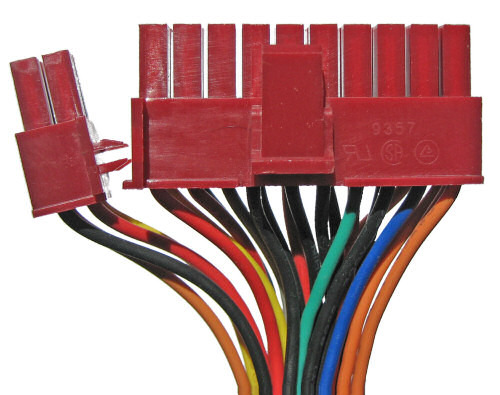
Image showing how to change a power supply’s 24-pin motherboard connector into a 20-pin connector by unclipping the end four-pin blockWhat do the PSU safety protection abbreviations mean?
There are many possible safety protections a PSU can have. Below is a list of what each abbreviation means. Please note, not all PSUs have all safety protections.
- OCP - Over-Current Protection
- OVP - Over Voltage Protection
- UVP - Under Voltage Protection
- SCP - Short Circuit Protection
- OPP - Over Power Protection
- OTP - Over Temperature Protection
- UL - Underwriters Laboratories, more information.
- TÜV - Technical Inspection Association, more information.
- CE - European Conformity, more information.
- FCC - Federal Communications Commission, more information.
- RoHS - Restriction of Hazardous Substances Directive, more information.
- WEE - Electronic waste, more information.
- 80 PLUS - Promotes energy efficiency for PC power supplies, more information.
- ErP - Energy Related Products, more information.
More information on certification marks can be found here.
Top Quiet Power Supplies

Seasonic PRIME TX-1600 Noctua Edition 1600W 80Plus Titanium Semi-Fanless PSU

Streacom ST-NANO160 160W nanoPSU and AC/DC adapter block

Seasonic PRIME Fanless 500W 80PLUS Platinum Modular Power Supply

Streacom ST-ZF240 ZeroFlex 240W Passive PSU

Seasonic PRIME Fanless 700W 80PLUS Titanium Modular Power Supply
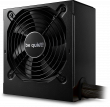
be quiet System Power 10 650W 80Plus Bronze PSU
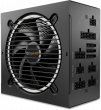
be quiet Pure Power 12 M 750W 80+ Gold Fully Modular ATX3.0 PSU
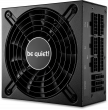
be quiet 600W SFX-L Modular 80PLUS Gold PSU

FSP Hydro Ti Pro 1000W 80PLUS Titanium Fully Modular ATX 3.0 PSU
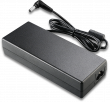
Akasa 120W Thin mini-ITX power adapter, AK-PD120-04M


